Euclid releases its first images: the dazzling edge of darkness
- ESA Euclid’s first full-colour images are the sharpest ever across such a large patch of the sky and looking so far into the distant Universe
- Euclid will create the largest and most accurate 3D map of the universe to study the dark universe
- IEEC researchers at the Institute of Space Sciences (ICE-CSIC) participate in this mission
![{“shape”: [8800, 8800, 3]} Euclid Perseus](https://www.ieec.cat/wp-content/uploads/2023/11/Euclid_s_view_of_the_Perseus_cluster_of_galaxies.jpg)
Caption: The Perseus Cluster of galaxies.
Credits: ESA/Euclid/Euclid Consortium/NASA, image processing by J.-C. Cuillandre (CEA Paris-Saclay), G. Anselmi; CC BY-SA 3.0 IGO.
The Euclid space mission of the European Space Agency (ESA), launched on 1 July, finally reveals its first full-colour images of the cosmos. Never before has a telescope been able to create such razor-sharp astronomical images across such a large patch of the sky, and looking so far into the distant Universe, up to distances of 10 billion light years. These five images illustrate Euclid’s full potential and show that the telescope is ready to create the most extensive 3D map of the Universe yet.
Researchers from the Institute of Space Studies of Catalonia (IEEC — Institut d’Estudis Espacials de Catalunya) at the Institute of Space Sciences (ICE-CSIC), together with and the Institute of High Energy Physics (IFAE), and the Scientific Information Centre (PIC), have been working in Euclid for more than 12 years. The four institutions have been responsible for the design, construction, assembly and validation tests of the Filter Wheel Assembly (FWA) of the NISP instrument and the cosmological simulations of the mission. This filter wheel is a mobile and delicate space instrumentation device that will allow us to determine the distances of galaxies up to billions of light years. The simulations have been necessary to design and optimise the mission and will be key to properly exploit the data.
“It is extraordinarily pleasing and rewarding to see these beautiful images taken with an instrument that we have built over so many years. It is amazing to realise that something that you have built is far away in space and is able to reveal the universe in such detail. We are looking forward to the science discoveries to come.”, says Francisco Castander, IEEC researcher at the ICE-CSIC and head of the Euclid Consortium at the Spanish level.
“It is extraordinarily pleasing and rewarding to see these beautiful images taken with an instrument that we have built over so many years. It is amazing to realise that something that you have built is far away in space and is able to reveal the universe in such detail. We are looking forward to the science discoveries to come,” says Francisco Castander, IEEC researcher at the ICE-CSIC and head of the Euclid Consortium at the Spanish level.
The mission aims at investigating dark matter and dark energy, that make up 95% of our cosmos. Its nature has not been unravelled yet, because their presence causes only very subtle changes in the appearance and motions of the things we can see. To reveal the influence of dark matter and dark energy on the visible Universe, over the next six years Euclid will observe the shapes, distances and motions of billions of galaxies out to 10 billion light-years. By doing this, it will create the largest cosmic 3D map ever made. What makes Euclid’s view of the cosmos special is its ability to create a remarkably sharp visible and infrared image across a huge part of the sky in just one sitting.
The images released today showcase this special capacity: from bright stars to faint galaxies, the observations show the entirety of these celestial objects, while remaining extremely sharp, even when zooming in on distant galaxies.
“Dark matter pulls galaxies together and causes them to spin more rapidly than visible matter alone can account for; dark energy is driving the accelerated expansion of the Universe. Euclid will for the first-time allow cosmologists to study these competing dark mysteries together,” explains ESA Director of Science, Professor Carole Mundell.
ICE-CSIC researcher and member of the IEEC and the Euclid consortium Pablo Fosalba adds: “These incredible first images already illustrate the huge amount of high-quality data that Euclid will provide about our Universe. Observing billions of galaxies, with this level of detail, is something that has never been done before. It will certainly revolutionise our understanding of how dark-matter and dark-energy determine the origin and evolution of the Universe.”
Zoom into the Universe through Euclid’s eyes
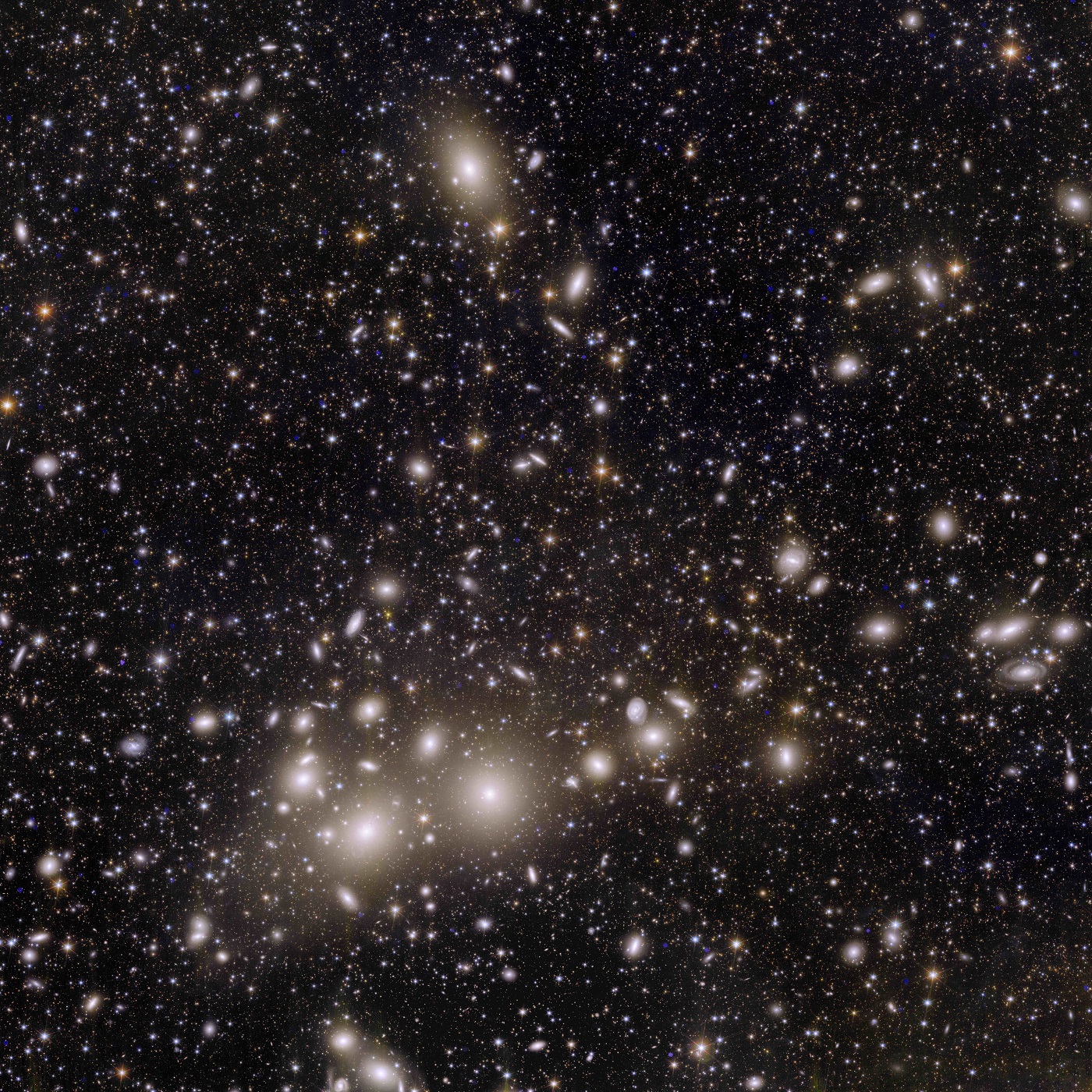
The Perseus Cluster of galaxies
This incredible snapshot from Euclid is a revolution for astronomy. The image shows 1000 galaxies belonging to the Perseus Cluster, and more than 100 000 additional galaxies further away in the background.
Many of these faint galaxies were previously unseen. Some of them are so distant that their light has taken 10 billion years to reach us. By mapping the distribution and shapes of these galaxies, cosmologists will be able to find out more about how dark matter shaped the Universe that we see today.
This is the first time that such a large image has allowed us to capture so many Perseus galaxies in such a high level of detail. Perseus is one of the most massive structures known in the Universe, located ‘just’ 240 million light-years away from Earth.
Astronomers demonstrated that galaxy clusters like Perseus can only have formed if dark matter is present in the Universe. Euclid will observe numerous galaxy clusters like Perseus across cosmic time, revealing the ‘dark’ element that holds them together.
Spiral galaxy IC 342
Over its lifetime, Euclid will image billions of galaxies, revealing the unseen influence that dark matter and dark energy have on them. That’s why it’s fitting that one of the first galaxies that Euclid observed is nicknamed the ‘Hidden Galaxy’, also known as IC 342 or Caldwell 5. Thanks to its infrared view, Euclid has already uncovered crucial information about the stars in this galaxy, which is a look-alike of our Milky Way.
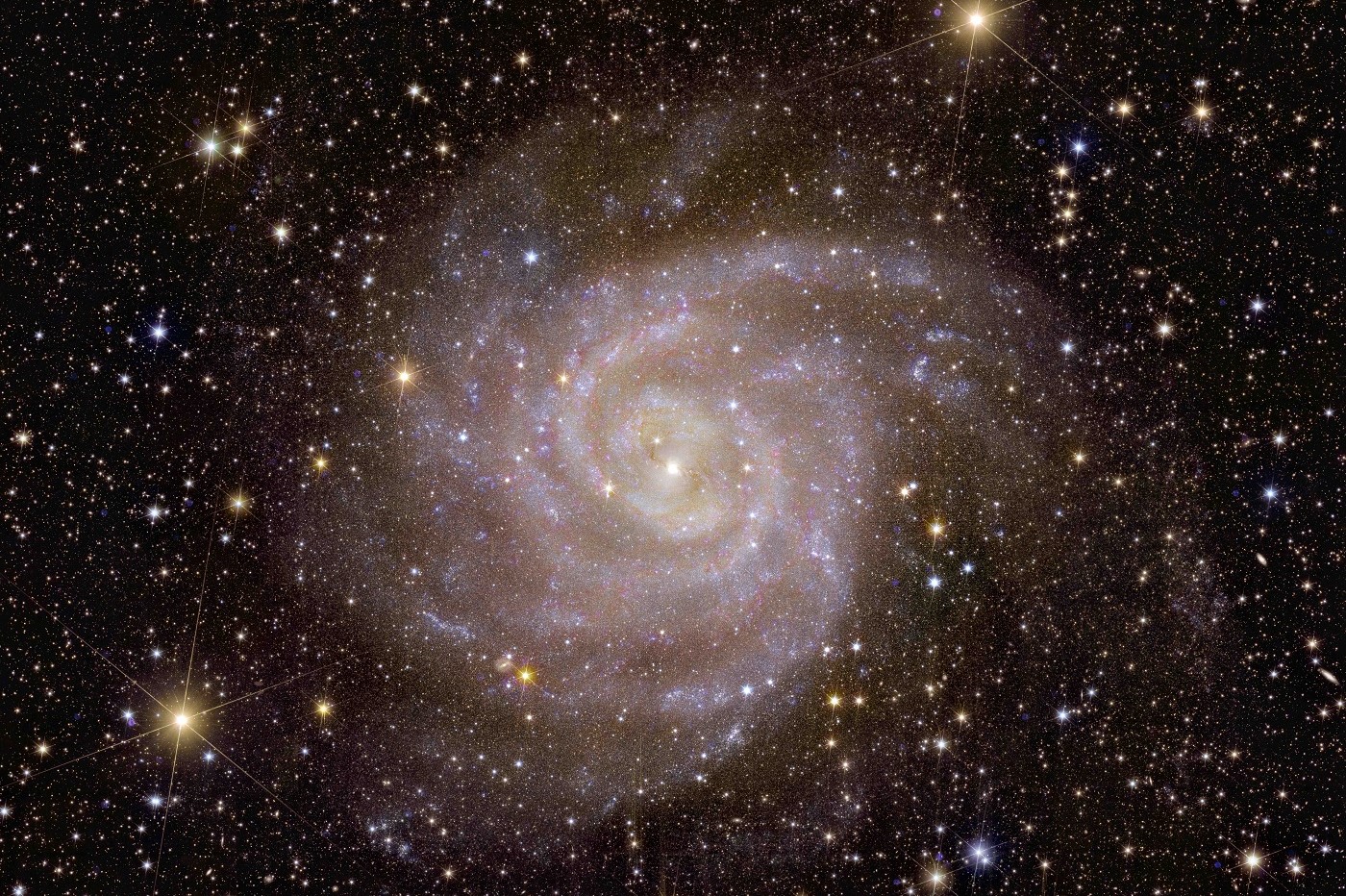
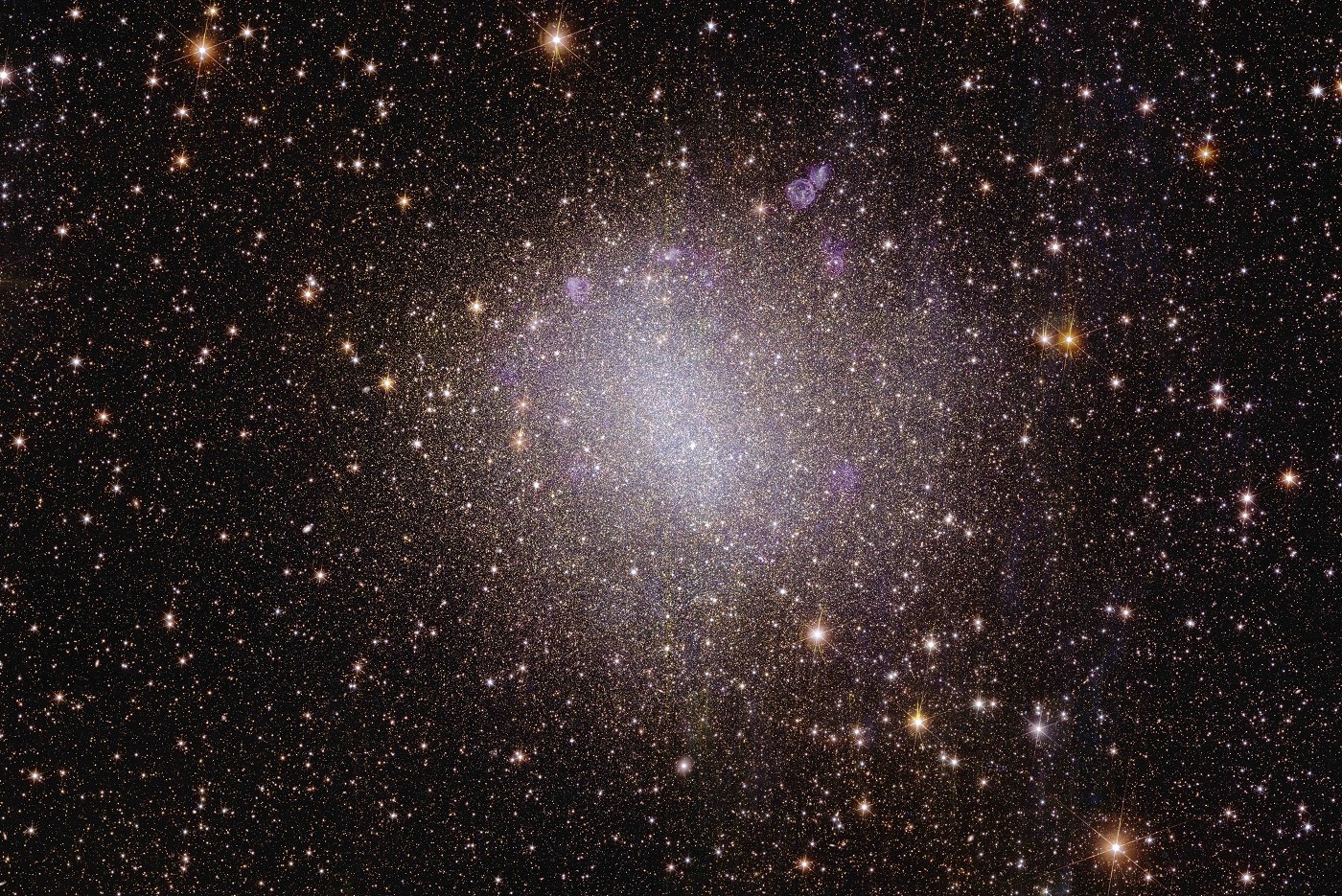
Irregular galaxy NGC 6822
To create a 3D map of the Universe, Euclid will observe the light from galaxies out to 10 billion light-years. Most galaxies in the early Universe don’t look like the quintessential neat spiral, but are irregular and small. They are the building blocks for bigger galaxies like our own, and we can still find some of these galaxies relatively close to us. This first irregular dwarf galaxy that Euclid observed is called NGC 6822 and is located close by, just 1.6 million light-years from Earth.
Globular cluster NGC 6397
This sparkly image shows Euclid’s view on a globular cluster called NGC 6397. This is the second-closest globular cluster to Earth, located about 7800 light-years away. Globular clusters are collections of hundreds of thousands of stars held together by gravity. Currently no other telescope than Euclid can observe an entire globular cluster in one single observation, and at the same time distinguish so many stars in the cluster. These faint stars tell us about the history of the Milky Way and where dark matter is located.
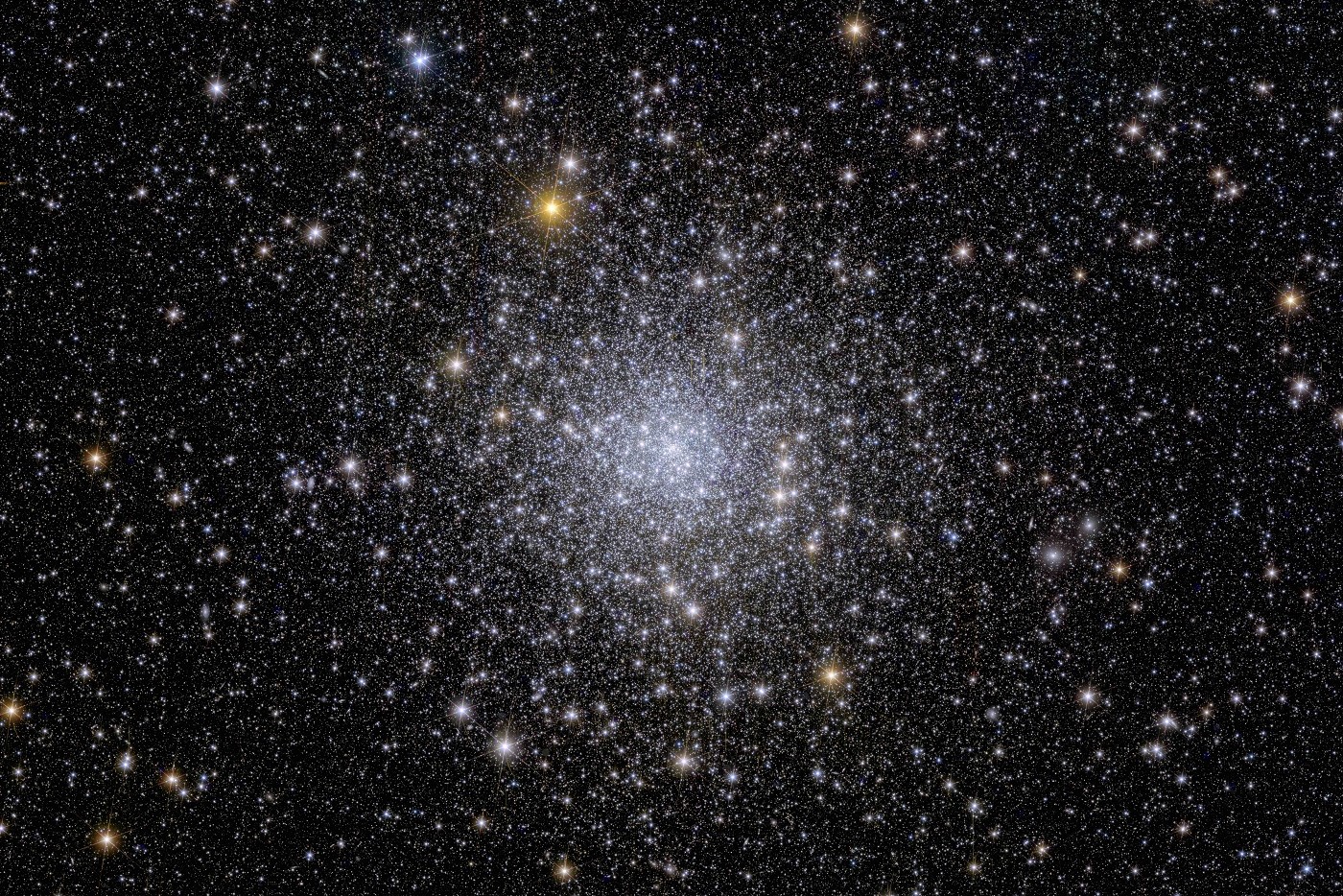
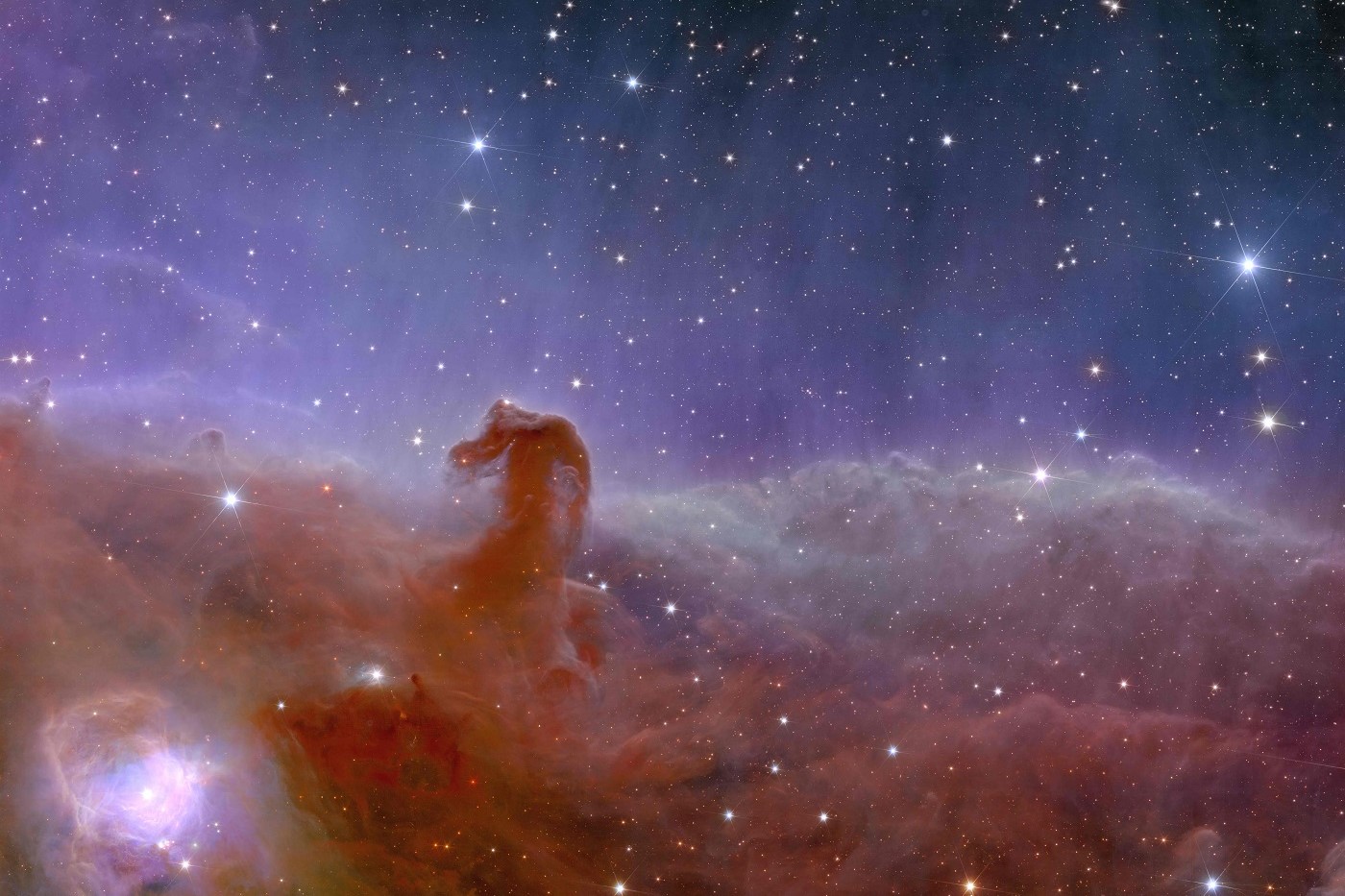
The Horsehead Nebula
Euclid shows us a spectacularly panoramic and detailed view of the Horsehead Nebula, also known as Barnard 33 and part of the constellation Orion. In Euclid’s new observation of this stellar nursery, scientists hope to find many dim and previously unseen Jupiter-mass planets in their celestial infancy, as well as young brown dwarfs and baby stars.
Credits of all images: ESA/Euclid/Euclid Consortium/NASA, image processing by J.-C. Cuillandre (CEA Paris-Saclay), G. Anselmi; CC BY-SA 3.0 IGO.
Press release prepared in collaboration with the Institute of Space Sciences (ICE-CSIC).
Links
Contacts
IEEC Communication Office
Barcelona, Spain
E-mail: comunicacio@ieec.cat
Lead Researcher at the IEEC
Barcelona, Spain
Francisco Castander
Institute of Space Studies of Catalonia (IEEC)
Institute of Space Sciences (ICE-CSIC)
E-mail: fjc@ieec.cat
Pablo Fosalba
Institute of Space Studies of Catalonia (IEEC)
Institute of Space Sciences (ICE-CSIC)
E-mail: fosalba@ieec.cat
About the IEEC
The Institute of Space Studies of Catalonia (IEEC — Institut d’Estudis Espacials de Catalunya) promotes and coordinates space research and technology development in Catalonia for the benefit of society. IEEC fosters collaborations both locally and worldwide and is an efficient agent of knowledge, innovation and technology transfer. As a result of more than 25 years of high-quality research, done in collaboration with major international organisations, IEEC ranks among the best international research centres, focusing on areas such as: astrophysics, cosmology, planetary science, and Earth Observation. IEEC’s engineering division develops instrumentation for ground- and space-based projects, and has extensive experience in working with private or public organisations from the aerospace and other innovation sectors.
The IEEC is a non-profit public sector foundation that was established in February 1996. It has a Board of Trustees composed of the Generalitat de Catalunya, Universitat de Barcelona (UB), Universitat Autònoma de Barcelona (UAB), Universitat Politècnica de Catalunya · BarcelonaTech (UPC), and the Spanish Research Council (CSIC). The IEEC is also a CERCA centre.
